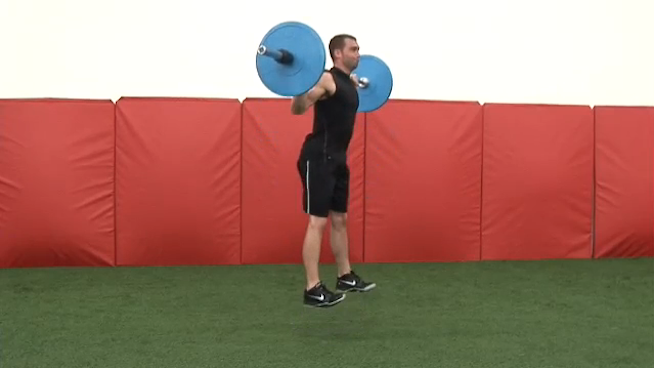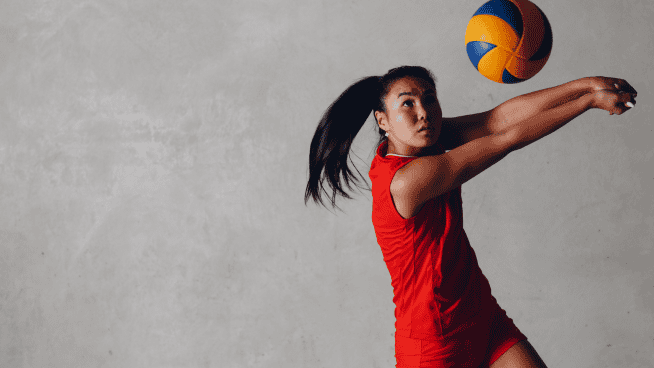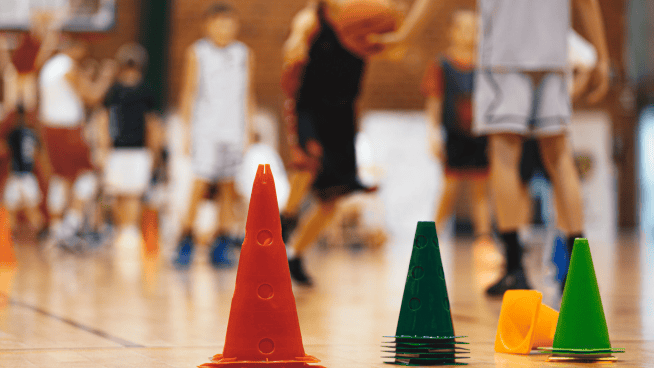Squat Jumps: Build Explosiveness With This Simple Lower-Body Exercise
We say the Squat is the “King of all Exercises.” Well, its cousin the Squat Jump might just be the king of all power development exercises. Here’s why:
It’s Ideal for Power Development
To propel yourself off the ground in the Squat Jump, you simply need to jump up—hence the name. This requires what’s called a triple extension, or when your hip, knees and ankles extend at the same time, to create maximum power, thereby training your muscles to become more powerful.
Why do we care about power? Well, you could say that power is everything in sports. The definition of power is force divided by time. The more force you can produce in less time, the more powerful you will be.
So imagine that you’re about to jump. If you produce a lot of force slowly, you probably won’t get much height. Same goes if you can move quickly, but fail to produce a lot of force. To truly develop power, you need both. And the Squat Jump helps with this.
Another benefit: You can do Squat Jumps for height or time. Jumping for height is going to be a maximum jump with each rep. For time, you’re still going to jump high, but your primary focus is limiting the amount of time you spend on the ground. This makes the move highly plyometric, which is another way to increase power.
It’s Easy to Perform
Olympic lifts can be complicated to perform. Heck, Olympic lifting is its own sport. There’s a lot of technique involved, and many athletes simply lack the time and resources to learn it.
Squat Jumps are a great alternative. Basically, all you need to know is how to perform a Squat. This, of course, isn’t guaranteed. But squatting is a fundamental exercise that all athletes should know how to do, so it’s more likely you can do this exercise with solid form. Read our guide to the Squat if you need help with your form.
Depending on your anatomy, you will lower between 45 and 90 degrees (between a half and a full Squat) to achieve maximum movement. Test your vertical jump using different depths to find the one that works best for you. The more specific to how you move in your sport, the better.
To make it more difficult, you can load this exercise up. This will remove the plyometric component, but it’s a great way to challenge power production from your hips and legs. Avoid using heavy weight like you would in a Back Squat. The goal here is power, so use no more than 10 percent of your max Back Squat. Lighter high-quality explosive reps are better than heavy laborsome reps.
How to Perform Squat Jumps
Step 1: Stand with your feet slightly wider than hip width and your arms at your sides.
Step 2: Squat to your desired depth, keeping your back straight and core tight.
Step 3: Explosively extend your hips, knees and ankles to jump up. Swing your arms up to generate extra momentum if you’re using just your body weight or a weight vest. This won’t be possible if you’re using dumbbells or a barbell.
Step 4: Land softly with bent knees aligned with your hips and ankles. Make sure they never collapse inward.
Step 5: Immediately explode up into your next jump.
When first trying Squat Jumps, always start with your body weight to perfect your technique and build power. You can then progress to weight vest or dumbells, a trap bar, and finally, a barbell. Stick to sets of 3-5 reps to maximize power.
READ MORE:
RECOMMENDED FOR YOU
MOST POPULAR
Squat Jumps: Build Explosiveness With This Simple Lower-Body Exercise
We say the Squat is the “King of all Exercises.” Well, its cousin the Squat Jump might just be the king of all power development exercises. Here’s why:
It’s Ideal for Power Development
To propel yourself off the ground in the Squat Jump, you simply need to jump up—hence the name. This requires what’s called a triple extension, or when your hip, knees and ankles extend at the same time, to create maximum power, thereby training your muscles to become more powerful.
Why do we care about power? Well, you could say that power is everything in sports. The definition of power is force divided by time. The more force you can produce in less time, the more powerful you will be.
So imagine that you’re about to jump. If you produce a lot of force slowly, you probably won’t get much height. Same goes if you can move quickly, but fail to produce a lot of force. To truly develop power, you need both. And the Squat Jump helps with this.
Another benefit: You can do Squat Jumps for height or time. Jumping for height is going to be a maximum jump with each rep. For time, you’re still going to jump high, but your primary focus is limiting the amount of time you spend on the ground. This makes the move highly plyometric, which is another way to increase power.
It’s Easy to Perform
Olympic lifts can be complicated to perform. Heck, Olympic lifting is its own sport. There’s a lot of technique involved, and many athletes simply lack the time and resources to learn it.
Squat Jumps are a great alternative. Basically, all you need to know is how to perform a Squat. This, of course, isn’t guaranteed. But squatting is a fundamental exercise that all athletes should know how to do, so it’s more likely you can do this exercise with solid form. Read our guide to the Squat if you need help with your form.
Depending on your anatomy, you will lower between 45 and 90 degrees (between a half and a full Squat) to achieve maximum movement. Test your vertical jump using different depths to find the one that works best for you. The more specific to how you move in your sport, the better.
To make it more difficult, you can load this exercise up. This will remove the plyometric component, but it’s a great way to challenge power production from your hips and legs. Avoid using heavy weight like you would in a Back Squat. The goal here is power, so use no more than 10 percent of your max Back Squat. Lighter high-quality explosive reps are better than heavy laborsome reps.
How to Perform Squat Jumps
Step 1: Stand with your feet slightly wider than hip width and your arms at your sides.
Step 2: Squat to your desired depth, keeping your back straight and core tight.
Step 3: Explosively extend your hips, knees and ankles to jump up. Swing your arms up to generate extra momentum if you’re using just your body weight or a weight vest. This won’t be possible if you’re using dumbbells or a barbell.
Step 4: Land softly with bent knees aligned with your hips and ankles. Make sure they never collapse inward.
Step 5: Immediately explode up into your next jump.
When first trying Squat Jumps, always start with your body weight to perfect your technique and build power. You can then progress to weight vest or dumbells, a trap bar, and finally, a barbell. Stick to sets of 3-5 reps to maximize power.
READ MORE:











